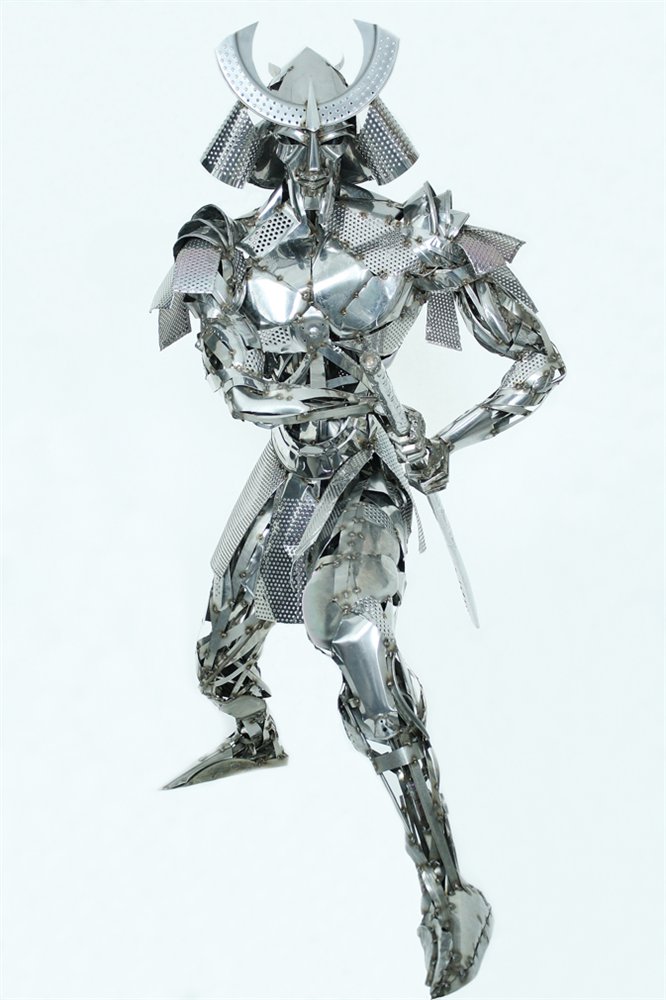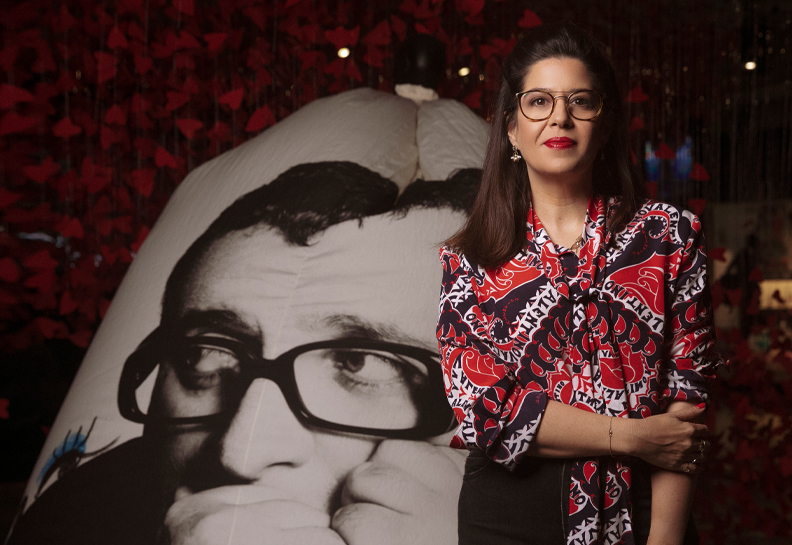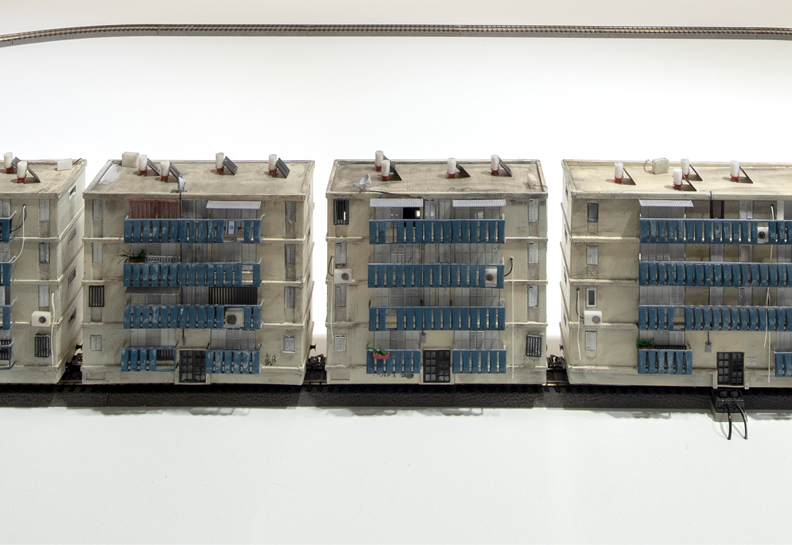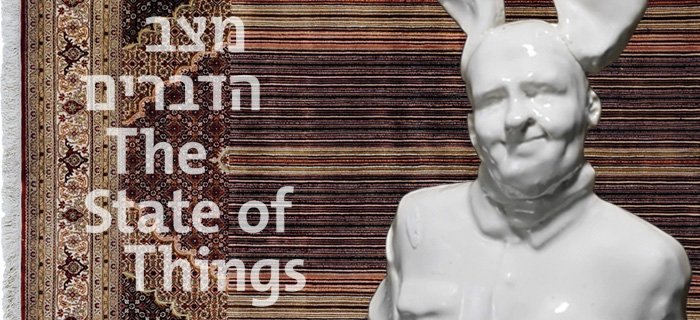An interview with designer Nikola Nikolov, reveals a designer who does not let go of old memories, but creates new designs from them.
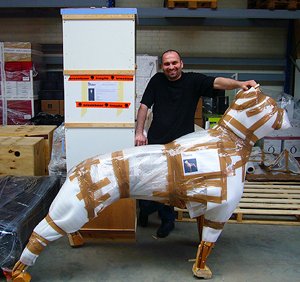 Nikola Nikolov was born in Bulgaria, and now lives and works in Holland where he established Studio-Re-Creation in 2009.He studied art in Sofia where he says he worked mainly with metals, making everything from everything; crude welding and craftsmanship, alongside delicate jewelry design. His father, who recognized Nikola’s natural talent for material, sent Nikola’s portfolio to French fashion designer Paco Rabanne. The portfolio piqued Rabanne’s curiosity, and he invited Nikola to intern at his atelier (Rabanne was heralded as a trailblazer in conceptual fashion design when he created mini dresses from metals in the 1960s, which are considered his trademark to this day).
Nikola Nikolov was born in Bulgaria, and now lives and works in Holland where he established Studio-Re-Creation in 2009.He studied art in Sofia where he says he worked mainly with metals, making everything from everything; crude welding and craftsmanship, alongside delicate jewelry design. His father, who recognized Nikola’s natural talent for material, sent Nikola’s portfolio to French fashion designer Paco Rabanne. The portfolio piqued Rabanne’s curiosity, and he invited Nikola to intern at his atelier (Rabanne was heralded as a trailblazer in conceptual fashion design when he created mini dresses from metals in the 1960s, which are considered his trademark to this day).
What was the transition like from Communist Bulgaria to Paris in the West?”The move to Paris was a kind of culture shock for me. I was amazed by the Western culture I discovered in Paris, and especially the world of delicate fashion that was so alien to me, so different to anything I’d known. I stuck with Paco Rabanne for two weeks, until we both realized that we couldn’t continue working together. The short, yet intensive, experience of interning for Rabanne, the move to Paris, and the change in atmosphere and location, made me decide that from here there was no going back for me”. He glances at me with a half-smile, and continues: “That whole experience resulted in a kind of Re-Creation of myself”.Nikola moved to Holland straight from Paris, when he was 24, where he continued his BA studies in art. He worked in a restaurant to finance his studies. For the first eighteen months he was a dishwasher, and whenever a dish broke, he collected the pieces, as if recognizing the potential inherent in them and waiting for the moment he would know what its purpose was (which came in the form of his piece, ‘The Chair’). In general, he is a self-confirmed obsessive collector. Every night on his way home from the restaurant he would scour the streets for interesting finds.
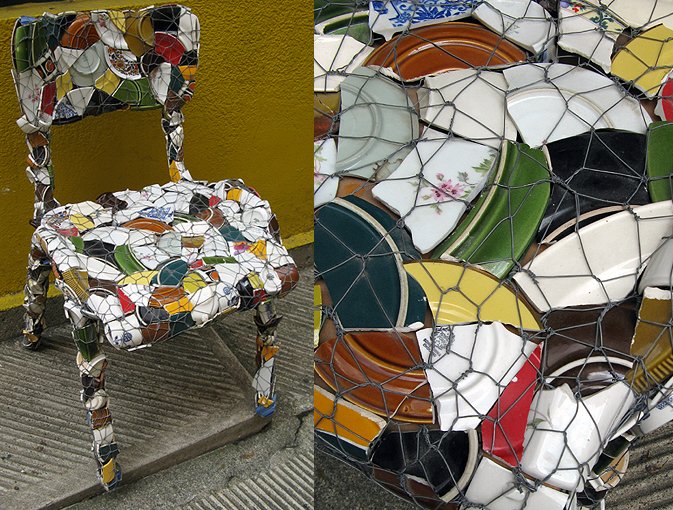 Studio-Re-Creation (Nikola Nikolov), The ChairI ask him about the meaning of the name of his studio: Re-Creation”All my designs”, he says, “are made from materials that have had a previous life. Sometimes the observer can identify their previous incarnation, and sometimes only guess and wonder about it. It all began when I was living in Paris. I asked my father to send me the cognac glass I liked drinking from back in Bulgaria. The glass my father sent, carefully wrapped in numerous layers lest it break en route, arrived intact. When I received it I threw it onto the floor and it smashed to smithereens. I then bound the fragments together with copper wire and recreated it. The shape of the glass was the same, but I gave it a new life. It no longer functioned as a glass. You can’t drink from it, but it acquires a new meaning as a work of art, a work of design.
Studio-Re-Creation (Nikola Nikolov), The ChairI ask him about the meaning of the name of his studio: Re-Creation”All my designs”, he says, “are made from materials that have had a previous life. Sometimes the observer can identify their previous incarnation, and sometimes only guess and wonder about it. It all began when I was living in Paris. I asked my father to send me the cognac glass I liked drinking from back in Bulgaria. The glass my father sent, carefully wrapped in numerous layers lest it break en route, arrived intact. When I received it I threw it onto the floor and it smashed to smithereens. I then bound the fragments together with copper wire and recreated it. The shape of the glass was the same, but I gave it a new life. It no longer functioned as a glass. You can’t drink from it, but it acquires a new meaning as a work of art, a work of design.
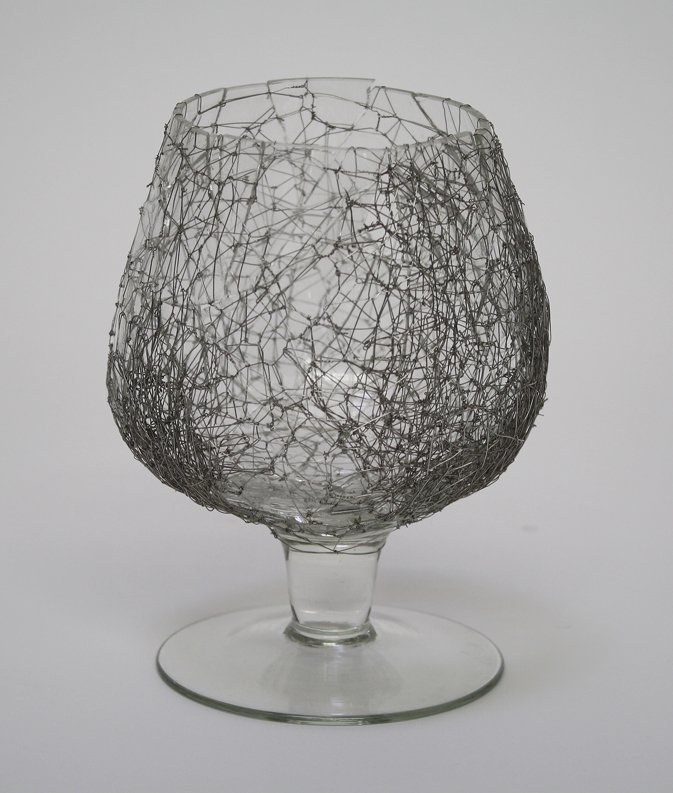
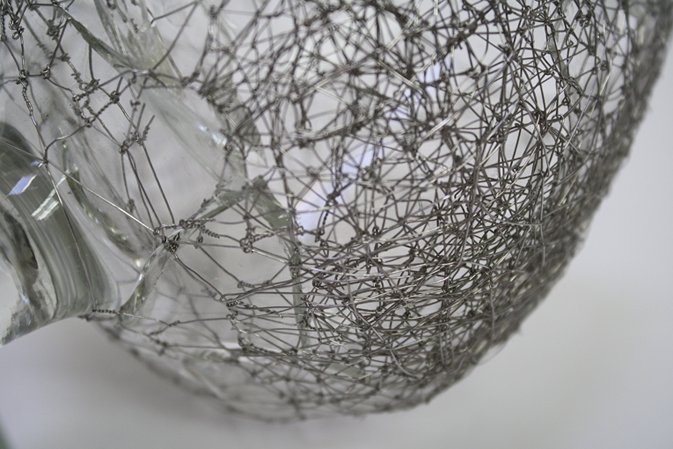
I also created White (Jack) Rabbit from materials that had had a previous life – old wood furniture. The rabbit started out as a chair. I had an old chair that fell apart and I repaired it. After a while it fell apart again, and again I repaired it. When the chair fell apart for a third time, I told myself – enough, apparently this chair no longer wants to be a chair. That was the beginning of what eventually became a rabbit. I re-create objects that have fallen out of use and give them new life”.
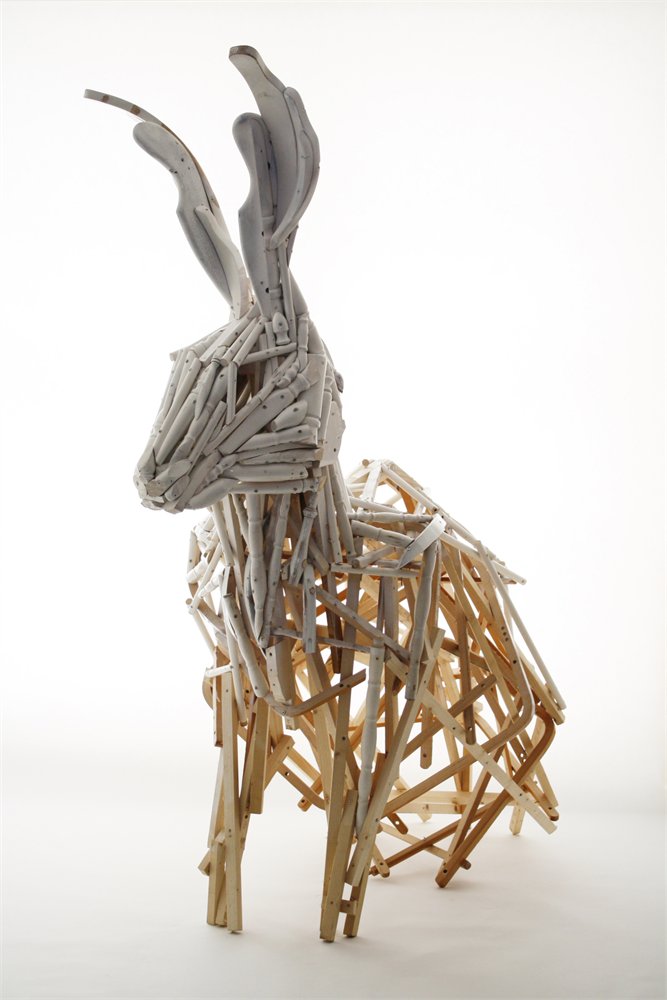
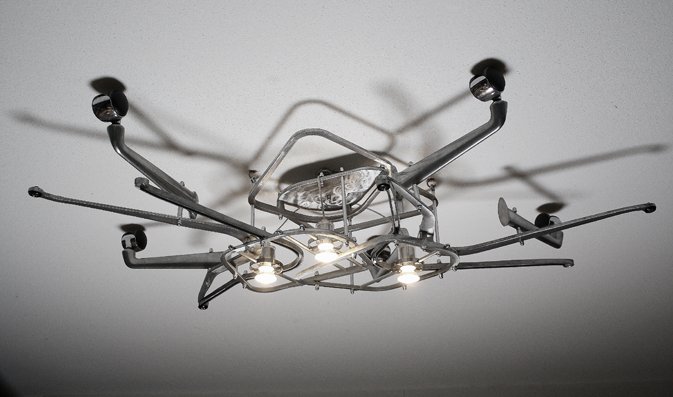

I read in an interview you gave that you actually created your first design sculpture from your old car?”Yes,” says Nikola, “the car wasn’t functioning any more, but it meant more to me than just a metal body: so much had happened in it, I had so many memories associated with it, I couldn’t let it go, even though its original usefulness and functionality were no longer there. One day I decided to do something about it and I started using it as raw material. I took it apart, I cut, I welded, and created what I later showed at Salone del Mobile, Milan 2010: The Transformer”.
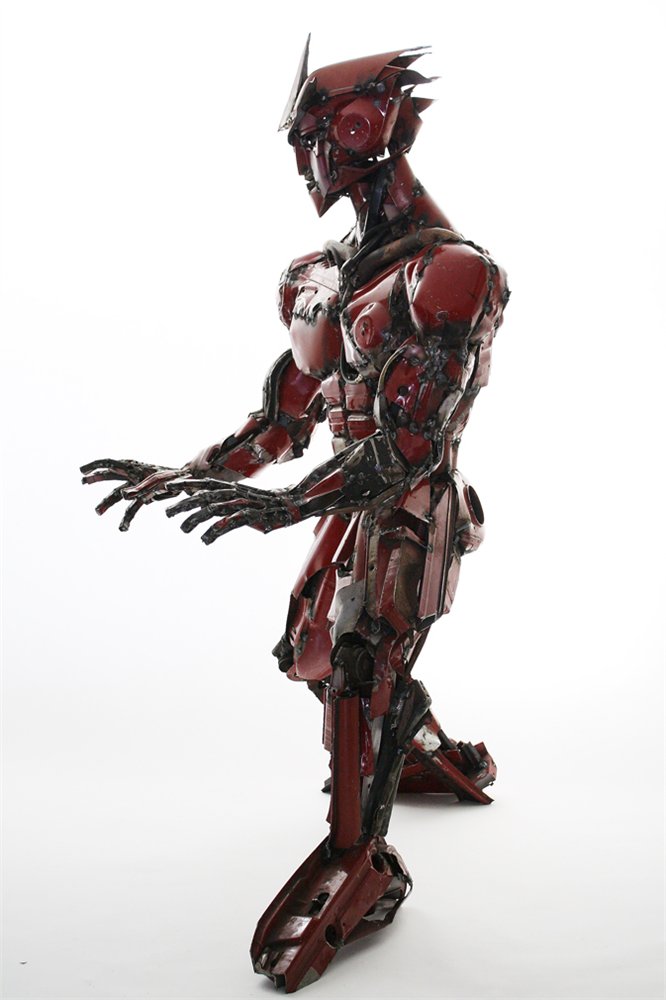
“Reactions to the two-meter high design sculpture”, he recounts, “were mixed. On the one hand it was the ‘official freshener’, a different and interesting subject of discussion among all the chairs, tables, and other design items usually shown at all Design Weeks. But on the other, I attracted a lot of criticism, such as ‘this is art, not design’, and ‘it’s not functional’. In fact, the eternal question regarding the difference between art and design arises here. As far as I’m concerned, to all intents and purposes it is design. The Transformer is made from a designed object – a car. Consequently, the final object is design: redesign of the originally designed object, re-creation”.The second design sculpture he created and which was first shown in June 2010 at the Dutch Design Bienale is ‘The Samurai’, which demanded considerably more collecting work than a single old car. Nikola came up with the idea for the sculpture of the Japanese warrior when he was in Japan for the opening of Post Fossil at Gallery 21_21 in Tokyo. That was when he understood what he had to make from the thirty or so washing machine drums he had collected on the streets over an eight-year period.
